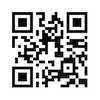Scholars Spotlight on Dundas & Wolf: How Memes frame Religion & Politics
The use of memes is an ever-increasing phenomenon in today’s society. Memes can be a humorous image, video, gif or piece of text that is shared on the internet. While memes may have humorous intent, they can often be misconstrued and used to express other messages.
Katie Dundas, project manager at Rose Marketing Solutions and Cody Wolf, co-researcher and current Seminary student, investigated how religion and politics are expressed through memes. They specifically explore memes during the 2016 presidential election in the article, “The Dissonance of “Civil” Religion in Religious-Political Memetic Discourse During the 2016 Presidential Elections.” According to Dundas, the goal of this research was to study “how people chose to represent their religious/political beliefs online through memes, but also how those memes then framed each of those political and religious organizations as a whole.”
An important finding highlighted in this article is the idea of “Civil Religion,” which is “where religion becomes a tool to interpret politics, with roots in nationalist ideas.” Wolf believes that through the use of memes, religious doctrines became detached from the religion in order to create a political viewpoint. A key part of this finding is the fact that most dissonance and conflict arose from contradicting religious/political combinations. As an example, Dundas highlights the reality that the Republican party memes often contradicted the Christian values that the party was established on. Because of this, Wolf hopes that “our conclusions demonstrate to people currently researching religion studies that a lot of the language and use of it we see in public discourse is not necessarily reflective of the Religion.”
As stated in this article, memetic discourse can be framed in four ways, the playful frame, the questioning frame, the mocking frame and the religious trope frame. These frames aided the researchers when analyzing the messages that religious and political memes can highlight. The result of this are the conclusions that religious-political memes are a part of civil religion, religion is shown opposing conservative ideals, civil religion in memes is hardly ever not political and expressing religion through political memes can be controversial.
For the link to the article, click here: http://journals.sagepub.com/doi/abs/10.1177/2056305118782678





